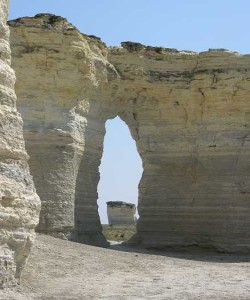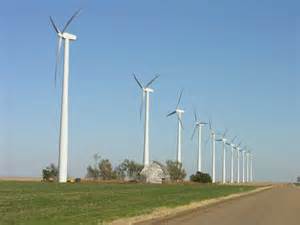Before I started writing The Middle of Somewhere, I did some research. Every novelist has to do some research, especially if she’s writing historical fiction (three of my published novels are historical fiction). An author has to have a sense of the lay of the land before she can determine which direction to go. And lots of authors love research. Unfortunately, I don’t. It can be a thrill, especially when discovering that little-known nugget of information that will provide a key event in the story—but mostly it’s a slog through tons of information you’re going to need to remember but you forgot to bring a pencil and paper along so you tear a strip of margin off that flier you picked up at the farmer’s market and scribble a note and stick it in the book and hope you remember where it is. (I’m not too organized at note-taking.)
But for The Middle of Somewhere, the research was fun! I went on my first-ever camping trip, all by myself! I checked a Kansas tour guide for interesting attractions, marked up a map, calculated mileage, and hit the road. And this time I didn’t forget the notebook, so when ideas and impressions came to me I pulled over and wrote them down. I was able to use almost all of them, which leads me to the third and final key of excellent writing:
DETAIL
- On a flat roadway on a sunny day, stretches of the road ahead often seem to disappear.
- On the windswept Kansas plains, trees really do bend toward the north, and a single tree on the horizon can look like the last one on earth.
- I encountered M. T. Liggett’s road sculptures just outside Mullinsville and took several pictures.
- The World’s Largest Hand-Dug Well is worth a stop, but I couldn’t figure out a way to include it in the book.
- When you’re at the Chalk Pyramids, the silence and weird rock formations can make you think you’re on another planet.
- At the time of my trip, the Gray County Wind Farm was the only wind farm in Kansas. There are more now—maybe Pop did his job well! When I stopped to take some pictures, a young teenager who looked no older than 14 drove up on the dirt road and asked if I needed help. We had a short conversation, during which he mentioned not liking the windmills because they kept him awake. If you’ve gotten that far in the book, you know that the boy became an important character in The Middle of Somewhere.
Sometimes when I give talks, I read a particular portion of the book and ask the audience to provide sound effects. It’s the scene in Chapter 7 where Pop decides he needs a break from kids, so he kicks Ronnie and her brother out of the RV for a night. They end up sleeping in a tent, and if you’ve read that far you know it was not a restful night. You might not have noticed the sounds I wrote about, but if you could participate in one of my talks when I read this chapter you’d see how much atmosphere they add to the scene. Where did all those sounds come from?
On my very first night in a tent, I was the only camper at the Cheney Lake (no relation) campground. Sometime after dark the wind kicked up, exactly as described in the book, and I started thinking about how maybe it wasn’t too smart to be out on the Kansas plains by myself in a flimsy tent during the tail end of tornado season. Obviously I didn’t get blown away, but when morning finally came I got out my notebook and wrote down all the sounds I could remember: sighing wind, moaning wind, the ping! ping! of raindrops on nylon, even the huh-huh-huh sound of the zipper pull. But not the creature snuffling around the tent—that didn’t really happen. All those sounds were added to make the scene believable.
Any writing teacher will tell you to use lots of details; that’s a basic rule. But you don’t just chuck them in. Have you ever made chocolate chip cookies? When do you add the chocolate chips—before you drop the dough on cookie sheets, or after? Most of us would stir in the chocolate chips while the dough is still in the bowl, rather than sticking them on each individual ball of dough after they’re on the cookie sheet. Details in a story are like that: you don’t just stick them in wherever there’s a place, or try to use up every one you thought of. Details should serve a purpose in the story.
Take another look at that bullet-point list above. I used the one about the disappearing highway during a part in the story when Ronnie is looking for her brother, who has also disappeared. The phenomenon echoes her bleak, anxious feelings. Mr. Liggett’s road sculptures form an echo to Gee’s hyperactivity. The detail about the northward-bending trees communicate a sense to Ronnie of other-worldness, of getting out of her normal life into a new existence, which is exactly what she wanted to do. Often, details serve no purpose other than to sharpen the scene and give the reader a sense of place, of “being there.” And that’s reason enough.
How’s it coming on your story? (Remember our contest with the great prizes?) Before I wave farewell and drive off into the sunset, here’s what you need to remember:
- Draw from your own experience about an actual summer vacation (even though you can make up the basic storyline).
- Focus on scenes and keep exposition (explaining and background) to a minimum.
- Use details in ways that enhance the story.
Now that our road trip is over, are you ready to roll on your own? Remember you have until July 20, which seems a long way off, but it’ll be here before you know it!
Are you just joining us? Here’s Betsy’s review of The Middle of Somewhere. And if you’d like to participate in our “Around the World in Sixty Days” summer reading challenge, here’s the overview, the master reading list, and the first post for our first challenge book. Don’t forget our adult/teen reading challenge–there’s still time to enter the contest to win free books!
Support our writers and help keep Redeemed Reader ad-free by joining the Redeemed Reader Fellowship.
Stay Up to Date!
Get the information you need to make wise choices about books for your children and teens.
Our weekly newsletter includes our latest reviews, related links from around the web, a featured book list, book trivia, and more. We never sell your information. You may unsubscribe at any time.
We'd love to hear from you!
Our comments are now limited to our members (both Silver and Golden Key). Members, you just need to log in with your normal log-in credentials!
Not a member yet? You can join the Silver Key ($2.99/month) for a free 2-week trial. Cancel at any time. Find out more about membership here.
2 Comments
Leave a Comment
You must be logged in to post a comment.





These posts are so fun to read, Janie!! Makes me want to go read the book all over again :-).
Such great advice! Thanks for sharing!